Does anything have more pull on the imagination than a snug winter cabin? Whether it’s in the woods, along the coast, or burrowed in the mountain snow—Oregon’s bounty proffers numerous opportunities for the perfect retreat. Here are three different cabin designs to jumpstart your daydreaming.
Seaside: A Charming Family Retreat
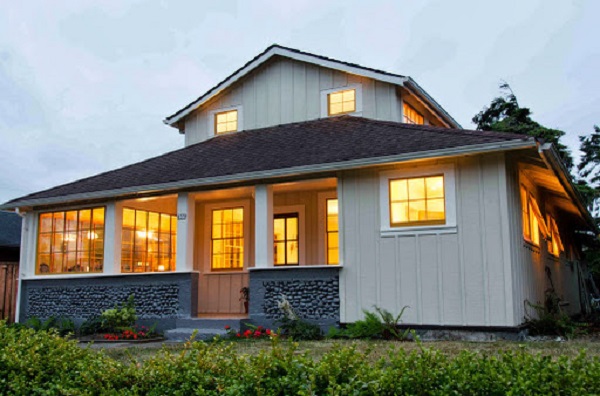
photo courtesy of Emerick Architects
In the summer of 2012, Melody Emerick and her husband, Brian, were on a walk in Seaside when they saw an abandoned 1910 cabin for sale. Although the cabin’s foundation had dramatically settled, one peek in the windows revealed the interior still had character. “There wasn’t a piece of drywall inside. It was all beadboard siding,” Emerick said. “Being old-house aficionados, we wanted to save it.” Both architects at their firm, Emerick Architects—a Portland firm that specializes in sustainable and historically sensitive building practices—they knew the cabin was fit for rescue. “It was priced to be torn down,” said Emerick. “So we thought that we would fix it up and sell it.”
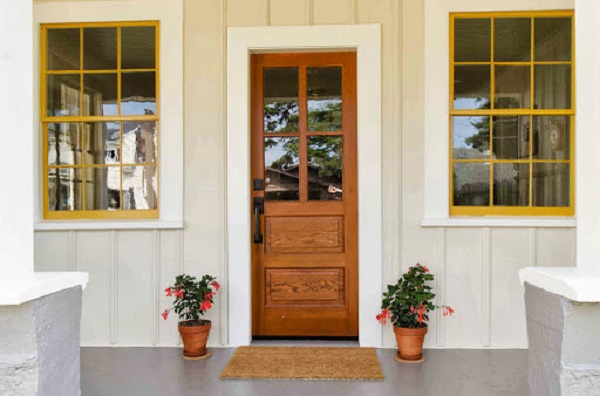
photo courtesy of Emerick Architects
After a structural overhaul, the cabin’s restoration became a labor of love for the whole Emerick clan. While helping with the demolition on the first floor, 17-year-old Lily poked a hole through the ceiling to reveal the attic’s hidden heights. That discovery led to building a new master suite upstairs, complete with new wooden windows, salvaged siding and a freestanding stove. Fifteen-year-old Iris helped her dad construct bunk beds in the downstairs sleeping berths. In order to keep the new interior consistent with the house’s age, they didn’t buy anything new, Emerick said. To that end, her daughters joined her at garage sales to pick out every fork and plate, even finding a Wedgewood refrigerator for the kitchen.
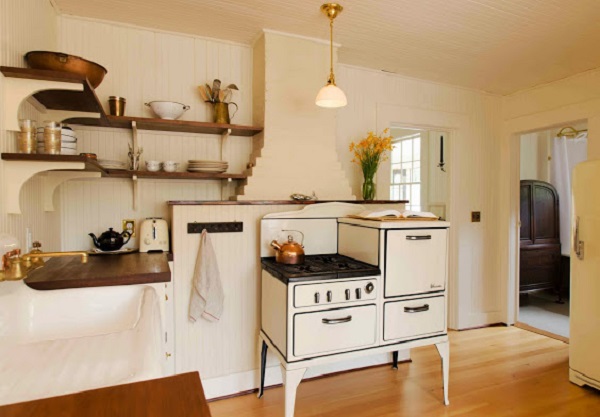
photo courtesy of Emerick Architects
Soon enough, the Emericks realized that they couldn’t sell the cabin, and it became the family’s refuge. They visit throughout the year to cook holiday meals or just let loose and play epic rounds of the card game, Hearts. “There’s no TV, so it’s sort of old-school,” Emerick said. “The minute we get there, everybody relaxes. It’s everything you want to be able to do with your family.”
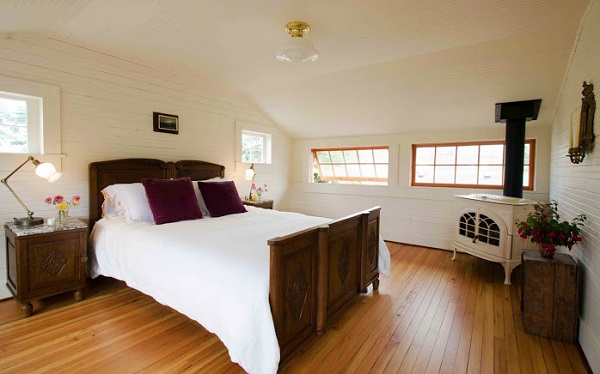
photo courtesy of Emerick Architects
Rhododendron: A Rustic Steiner
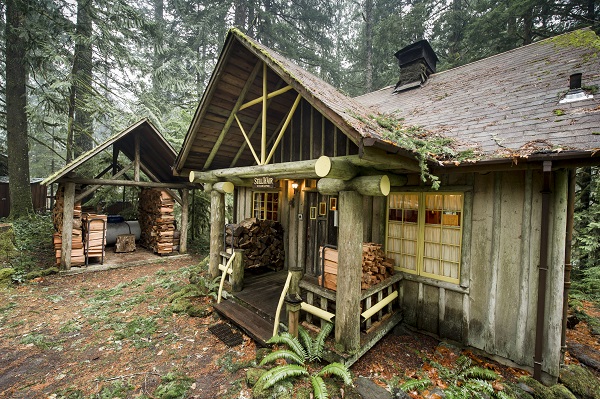
photo by Bill Purcell
As a kid, Steve Graeper’s last day of school was defined not by the bell, but by the sight of his mother with a packed family car. As Graeper, now a Federal Security Agent at Portland International Airport, remembers it, “That meant that we would be driving up the mountain to spend all summer there.” As always, the family cabin in Rhododendron greeted them.
The Graeper cabin is one of several on Mt. Hood constructed by Henry Steiner and his sons between 1920 and 1940. Steiner was a self-taught master craftsman, known today as the pioneer of Oregon Rustic style. His cabins were built by hand with local materials, such as Douglas fir trees downed on site and rocks collected in nearby riverbeds. In 1932, a local hotel owner commissioned Steiner to build the Graeper cabin. “It was designed to go up rapidly and be sold as a spec summer home,” Graeper said. In 1942, his parents bought it for $1,500. The cabin stands as a testament to the Steiner family’s sound craftsmanship.
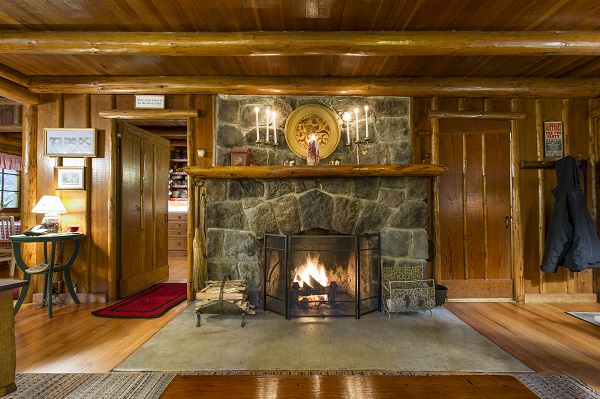
photo by Bill Purcell
Over the years, Graeper has made minimal updates in order to retain Steiner’s signature design elements. On the exterior, this includes the cabin’s original board and batten siding, bentwood handrails, and a decorative brace over the front porch. Inside, a giant hearth composed of river rock divides the kitchen from the living area, which contains Steiner-made furnishings such as a peeled log dining room table and a coffee table fashioned from a tree stump. Upstairs, the sleeping loft still holds two split-log Steiner beds.
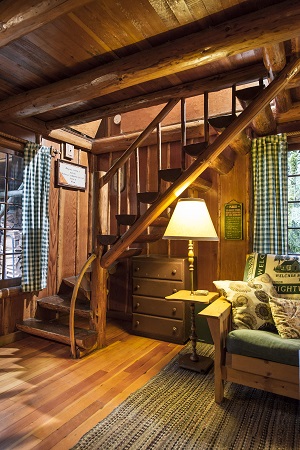 |
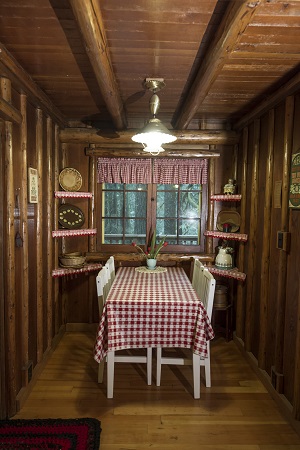 |
photos by Bill Purcell
Graeper made sure to winterize the cabin so that his family can take shelter during any season. “Life can get you overwhelmed,” Graeper said. “But when we’re all at the cabin, it just seems to slow down. It’s amazing how a house can do that.”
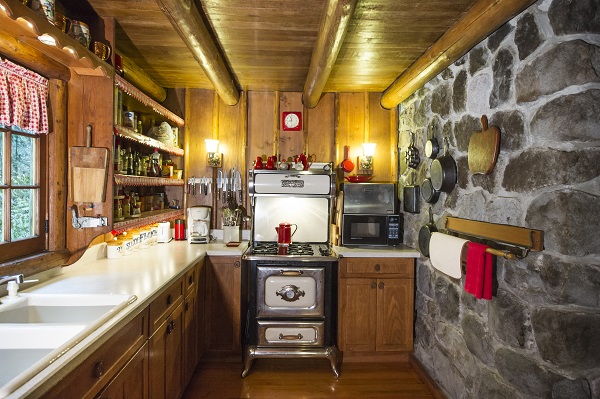
photo by Bill Purcell
Sauvie Island: A Farm Sanctuary
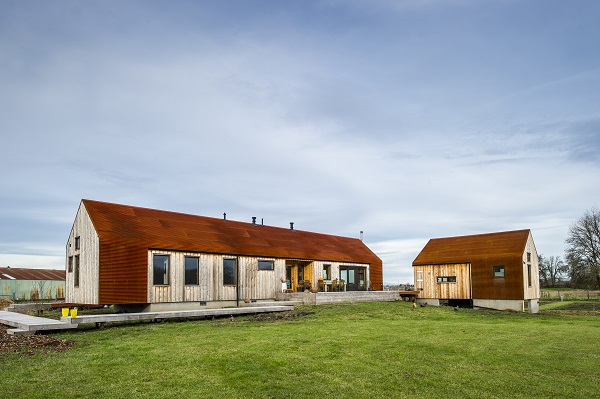
photo by Bill Purcell
In 2012, Vail Fletcher, a professor at the University of Portland, and her partner, Greg Stamp, a Tazo tea buyer, were living in inner Southeast Portland when they decided to do a fortuitous internet search one night. At the time, Fletcher knew that she wanted more space in order to own several animals, while Stamp sought to transition into small-scale farming. A five-acre field on Sauvie Island popped up in the Multnomah County real estate listings results. “It was just a barren field,” Fletcher said. “We thought of it as a blank slate.”
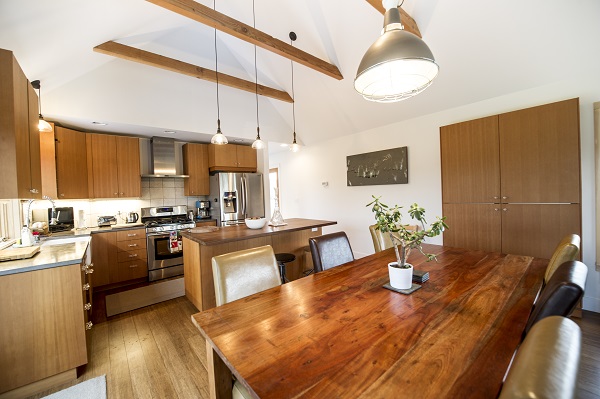
photo by Bill Purcell
After they bought it, the couple planned to build a micro-structure on the property and visit on weekends. It wasn’t long, however, before they realized that they’d rather get their cabin fix more permanently.
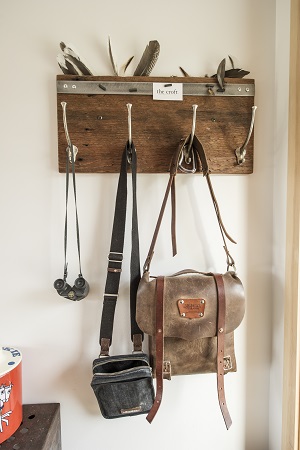 |
 |
photos by Bill Purcell
Today, not only have they established an organic CSA farm (run by Stamp) and a nonprofit animal rescue, they have also built two cabins—one for their primary residence and the other used as a smaller getaway for visiting friends and family.
During the building process, Fletcher and Stamp stayed on track by coining a reminder: “clean lines and sunshine.” The main house is sited to maximize both sun exposure and the pastoral views. Inside, the open concept living area has a pitched roof over head and Scandinavian wood-burning stove inside. They painted their walls white and hung art sparsely. This has since prompted another fortuitous discovery. “Out here, our views are just trees and flowers and birds,” she said. “I get to pay attention to things that I missed when I was surrounded by other houses and people and noise. It’s almost like someone’s changing the painting on our wall every month. Nature is the artwork.”
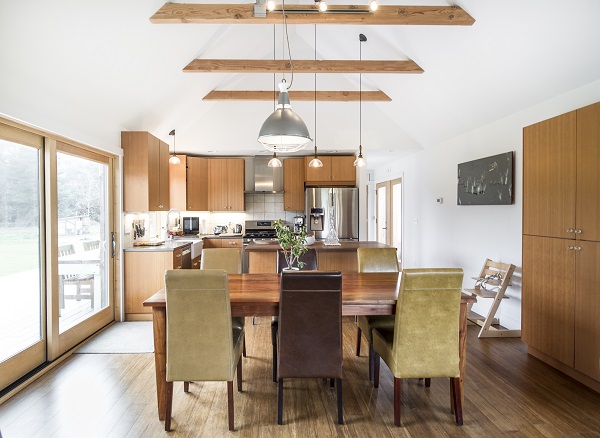
photo by Bill Purcell
Designer’s Spotlight: Jim Olson’s Glass Farmhouse
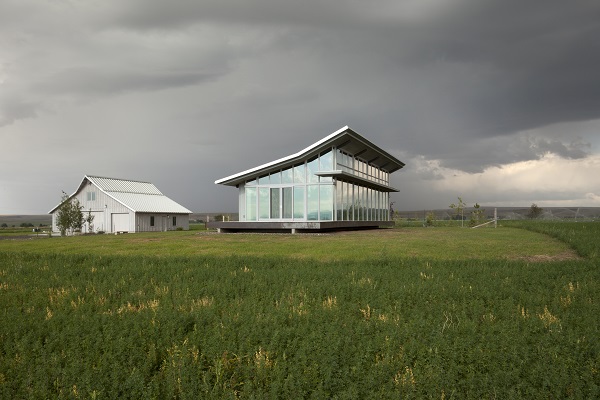
photo by Lincoln Barbour
After forty-five years of designing houses in the Pacific Northwest, renowned architect Jim Olson, of the Seattle-based firm Olson Kundig Architects, shows no sign of wanting to quit. “Architecture is one of those professions that you can do for your entire life,” he said. “It’s so creative that it isn’t like a job.” He shares his thoughts about his recent glass farmhouse design in Eastern Oregon.
Is there a difference between designing for the western versus the eastern sides of the state?
Western Oregon has more of a marine climate, with a lot of greenery. The architecture fits into the landscape amongst the trees. In Eastern Oregon there’s more open space, so the building is more of a sculptural object on the landscape.
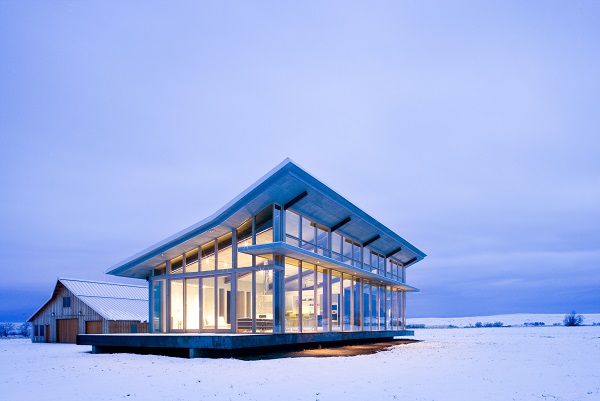
photo by Lincoln Barbour
What were the client’s goals for this design?
They had always liked Philip Johnson’s glass house, a very famous house built in 1949 in Connecticut that has glass on all sides.
What else influenced you?
Since there weren’t trees for the house to play off of, I thought about other elements in the landscape. What really stood out were the barns. The idea struck me that you could do a half of the barn roof shape.
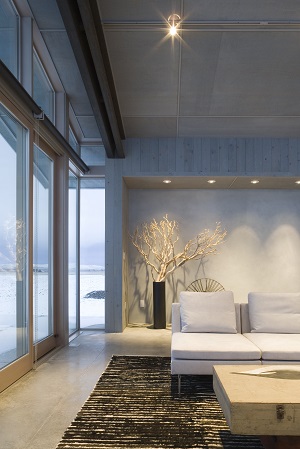 |
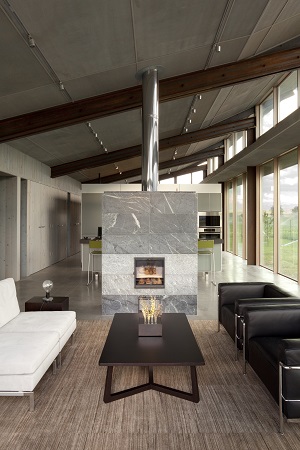 |
photos by Lincoln Barbour
How is the house energy efficient?
It faces south and the pitch in the roof encourages the sun to come inside, no matter the season. Below that pitch is a flat ledge that I call the eyebrow. In the summer, that ledge keeps too much sun from coming in. Architecture has to look good, of course, but it also has to do all these other things. One is to keep the house comfortable so that when you’re inside, it feels right.
What else should we know about the design?
It’s on a wheat field. When the wheat grows, it comes to just above floor level. So when you’re sitting inside in the summer, it’s like you’re on a boat in a sea of wheat.
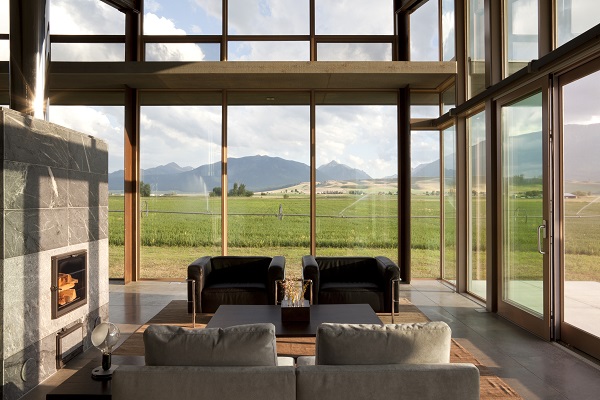
photo by Lincoln Barbour
What do you like best about the house?
I love that it’s like you’re living outdoors, yet you’re comfortable. I always say that living close to nature is the greatest luxury. It isn’t about the size of a house. I see this house, at 1,450 square feet, and the luxury is all the space around them and the connectedness with the natural world. That’s a much greater luxury than having material things.
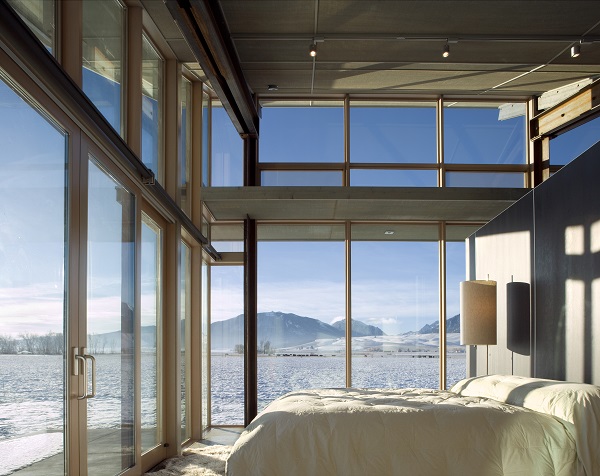
photo by Lincoln Barbour


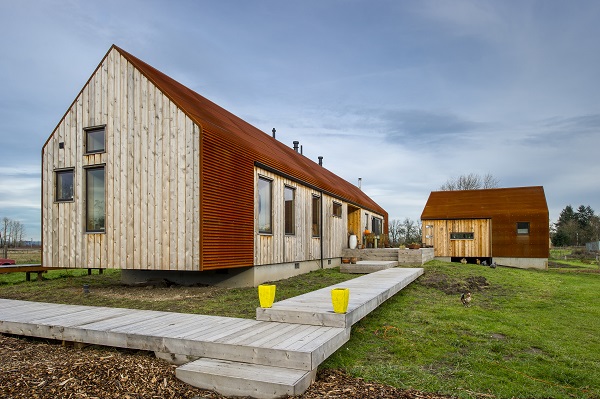

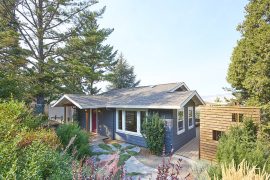
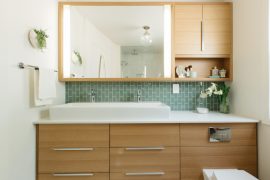




The Steiner is AMAZING!And a True Cabin 😉 The only real one in the bunch. 😉
Wow! That Steiner is remarkable. How do I get in touch with the owner? Is it rentable?